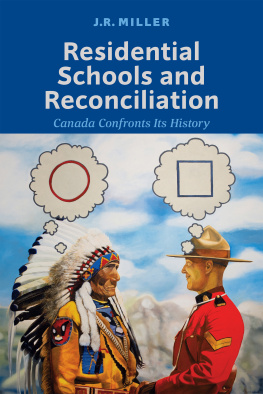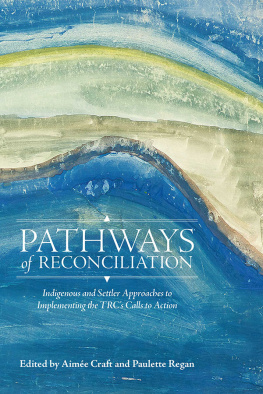Copyright 2021 by Margaret D. Jacobs
Princeton University Press is committed to the protection of copyright and the intellectual property our authors entrust to us. Copyright promotes the progress and integrity of knowledge. Thank you for supporting free speech and the global exchange of ideas by purchasing an authorized edition of this book. If you wish to reproduce or distribute any part of it in any form, please obtain permission.
Requests for permission to reproduce material from this work should be sent to
Published by Princeton University Press
41 William Street, Princeton, New Jersey 08540
6 Oxford Street, Woodstock, Oxfordshire OX20 1TR
press.princeton.edu
All Rights Reserved
ISBN 9780691224336
ISBN (e-book) 9780691226644
Version 1.0
British Library Cataloging-in-Publication Data is available
Editorial: Priya Nelson & Thalia Leaf
Production Editorial: Ali Parrington
Text Design: Karl Spurzem
Jacket Design: Amanda Weiss
Production: Danielle Amatucci
Publicity: Maria Whelan & Amy Stewart
Jacket illustration by Sarah Rowe
INTRODUCTION
June 10, 2018: Its a typical summer day in Nebraskahot, humid, hazy. An insistent wind blows the heat around, like a convection oven. We are on a farm. Yes, there will be corn. The farmers Art and Helen Tanderup are white and in their sixties. Art is portly, a bit aloof and gruff. Helen exudes both stand-by-your-man farm wife and tough-as-nails take-no-crap rural woman.
This farm has been in Helens family ever since the late nineteenth century, pioneering days. If you are imagining a two-story clapboard farmhouse, circa 1900, with a big porch, surrounded by a tangle of rosebushes, dignified old shade trees, and a generous circle of grass, youd be right. Art is preparing to plant corn in his field near Neligh (pronounced Neeley) in north-central Nebraska. Helen is working the kitchen.
But the tractor remains in the barn, and the big sacks of field cornthe kernels all the same size and the same weak yellow colorsit unopened in the utility shed. Art wont be planting those today. Instead, about one hundred people are slowly gathering to help Art sow something else on his land, by hand. They come bearing small beaded bags of seeds. Poured out in your palm, they are dusty blue, pomegranate red, with some cream and butter thrown in.
These sowers have also brought tubs of potato salad and coleslaw, hefty watermelons, and still-warm pies, and many are pitching in to help Helen serve the large crowd. Perhaps, you think, its a neighborly barn raising, a return to the homesteading era. Maybe you feel a little nostalgic, just thinking about it, if youre from a farm family, or if your childhood diet of pop culture was filled with such scenes, as mine was.
But this isnt a reunion of pioneer families. Many of the visitors are members of the Ponca tribeseparated by federal fiat into northern (Nebraska) and southern (Oklahoma) branches for over 135 years. Indians from other nearby tribesthe Omahas, Winnebagos, and Santee Sioux in the northeastern corner of the statealso have come to the gathering. They ride up to the Tanderups farm in fully decked-out pickups. They tumble out of their trucks, laughing, in shorts, jeans, and flip-flops. Some of the women dress in handmade calico skirts ringed with ribbons. Some sport hand-beaded accessories. Almost everyone is wearing a turquoise-blue T-shirt, made especially for this day, emblazoned with several ears of multicolored maize. There are non-Indians, too, in their baseball caps and cargo shorts, their Birkenstocks and sneakers. Kids turn cartwheels on the grass; their grandparents lounge in folding chairs near the big utility shed where the food will be served.
Its clear from the hugs and the smiles, the comfortable ease, that many of these people have known one another for a while. Indeed, these modern and these ancient corn planters had originally come together in 2013 to oppose a transnational oil pipelinethe Keystone XLthat would bisect the Tanderups farm and the homelands of the Poncas. These strangers didnt know each other then, but they shared a common concern that a pipeline spill would contaminate the water, quietly flowing underground in the Ogallala Aquifer. They feared the poisoned water would disperse for hundreds of miles.
They worried, too, that the pipeline, which would transport sticky tar sands oil over 2,200 miles from Alberta, Canada, to the Gulf of Mexico, would just make climate change worse. Against the pipelines champions who claimed it would create much-needed jobs in rural Nebraska in the immediate future, they said it would only bring environmental calamity in the long run. And they shared a common indignation that a foreign corporation, with the governments backing, could simply take the precious land for its own purpose without the consent of its owners. Slowly the strangers became political allies.
And then something else happened. Political alliances grew into personal friendships. In November 2013, the Tanderups hosted their first spirit camp, where a group gather together and do a lot of prayers, ceremony, visiting, getting to know each other, as Art explains. The harvest was done. Winter was creeping in and starting to chill and darken the bright days of autumn. Everything grew quieter.
For four cold days, with about six inches of snow on the ground, forty to sixty people gathered each day at the spirit camp. Many of them hailed from seven or eight nearby tribes. Non-Indian farmers and environmental activists converged on the farm, too. They built fires to keep warm and raised a tepee. They joked that cowboys and Indians were finally uniting.
The Keystone XL protesters strategized politically, but they also became closer as they tended the fire, made and shared meals, prayed together, and told stories. Most attendees left at twilight as the temperature dropped and night set in. But a few hardy souls remained. and we would go into the tepee, and we had a fire in there, Art recalls, and we could take our coats off and be nice and comfy, and we would sit around and talk about things.
Mekasi Horinek, from the Ponca tribe of Oklahoma, was one of those who stayed during the cozy evenings in the tepee. From him and other Poncas, the Tanderups learned the tribes history. The Poncas had been a small tribal nation; by the 1870s, they numbered just about seven hundred. In the early 1800s they had lived for most of each year in a village where the Niobrara River greets the Missouri River, about fifty miles north of the Tanderups farm.
There in the fertile river bottom the Poncas grew the three sisterssquash, beans, and cornas well as tobacco. Each summer most tribal members journeyed out onto the vast surrounding grassy plains for the annual buffalo hunt. They returned to their home base each August or September to harvest and preserve their crops for the winter ahead.
The site of the Poncas former village in Nebraska is now a state park. It attracts state residents and some out-of-state tourists, intent on canoeing, rafting, tubing, or tanking down the Niobrara River. This last endeavor consists of riding with a bunch of people in a big metal stock tank, usually with large quantities of beer. You hear tales of virtual traffic jams on the river on hot summer weekends. Since Im a bit of a recluse, and sunburn easily, I always stayed away from the scene.










